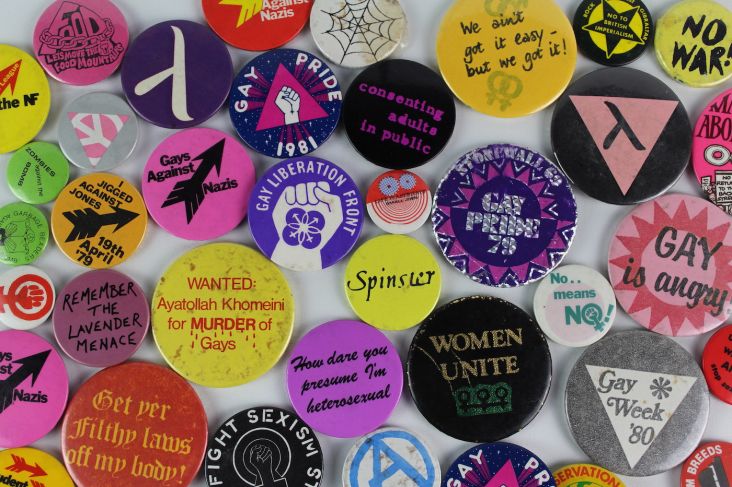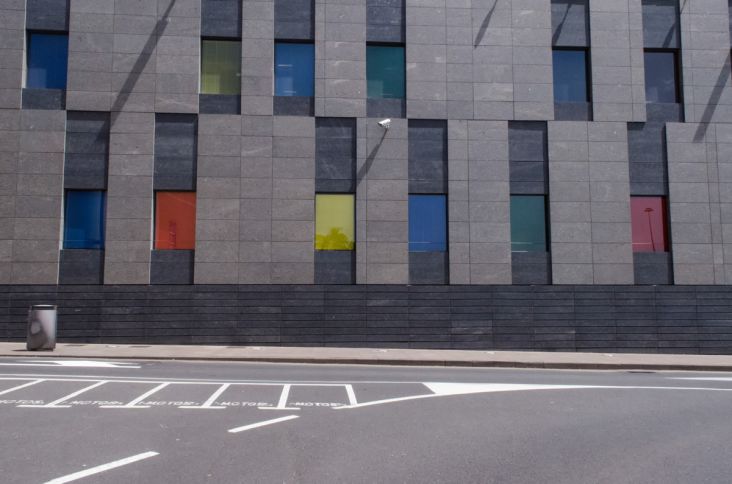Supercharged content marketing tips from some of the UK's brightest start-ups
In All Marketers Are Liars, Seth Godin explains why great marketers don't talk about features or even benefits. Instead, they tell a story – a story we want to believe and buy into. If you're keen to tell your own story and attract people to your business, then content marketing is where it's at.

Image courtesy of Huckletree
We've partnered with Huckletree this month, one of London's fastest growing co-working communities, to speak to some of their members and uncover the secrets of modern marketing. These bright start-ups are really smashing it when it comes to telling their own stories. They've learnt first-hand the dos and don'ts of content, and have kindly shared their nuggets of wisdom with Creative Boom.
1. Adopt a suitable tone of voice
Before you even think about creating a content marketing strategy, take a step back and consider who you are, and what you stand for. Because from this point forth, you'll be presenting yourself to the world, and you'll want to strike the right chord.
How do you do that? Don't be afraid to show the real you. Be authentic. If you try and be something you're not or too 'perfect', the cracks will eventually show and your marketing will backfire.
Sam O'Connor, co-founder and CEO of Coconut, says: "I'm a big believer in creating a narrative around your personal story. On top of sharing successes and showing confidence, be honest and vulnerable. Even if it feels uncomfortable.
"It's easier to maintain and be consistent if you're being natural. And even though people often present a very polished image, everyone has struggles too, so they will connect with it and you will stand out."
2. Always have your audience in mind
But no matter how personal you are, never forget who you're talking to. That's certainly the advice from Elliott Aeschlimann, co-founder of Bombinate: "Content marketing often has two roles in organisations – to bring traffic to your business, and to convert visitors into leads/customers.
"I think you should definitely focus on conversion before attraction. You can write the most clickable article you want, you’ll probably first attract the wrong people. Think about it: if you create valuable content your first visitors will stay. Then, ask them what they love about your content. Work on these key points and now you’re ready to attract traffic with your content. You don’t want to invite people to a party without any music!"
3. Choose the right type of content
Think content is just about blogging? Think again. Content can come in all shapes and sizes – Instagram Stories, vlogs, videos, tweets, photography... there are so many ways you can tell your story.
Sam from Coconut learnt the hard way: "I don't come from a marketing background so it took me a while to learn actually what content is and how powerful it can be to get your message out. Initially, I thought it was about writing blogs on relevant topics. I quickly realised this isn't great for us because there are a lot of really good people doing interesting and quality stuff. It makes it hard to compete when you're starting out. Unless you specialise in something that a group of relevant people are interested in.
"Where we've had loads of success is more personal content like vlogs. It's easier to whip up and gives people a window into how we operate, so the viewer connects with our story. We've also done well where we've joined an existing conversation or news story and piggy backed off the buzz surrounding it."
Elliott from Bombinate says: "We're a multi-brands platform dedicated to high-quality makers from Europe. As such, we're lucky to be able to easily collaborate with our partner brands to create compelling content. To this stage, video content is the format which has helped us express our story and foster collaborations with brands."
So content isn't just about blog posts and video is powerful. Got that? Good. But before you delve head first into your own content creation, consider what your target audience is most likely to engage with.
Where else have Huckletree's start-ups had success? Liam Doolan, co-founder of Comb, says: "We use relatable content for our audience that they would normally see from their favourite influencers/friends online, so this easily resonates with the content they are already seeing across online, in particular, social media and video. By telling the story of our users it makes the content relatable to our audience."
Elliott of Bombinate adds: "We’re seeing that interviews also spike curiosity from our audience and are very shareable." In fact, Elliott just took part in a podcast with the much respected Monocle magazine, which has only helped to boost his start-up's reputation.
4. Pick the right channels
You've crafted your content and are ready to fire it out there. But which channels will you use to spread your message?
"Twitter is a great way to get a story or thought out for free. If people start retweeting, the reach grows exponentially," says Sam, of Coconut. "But it has to be compelling to capture attention either through relevance to something happening now that people want to talk about, an insight that's fresh or humour. We had one tweet which gathered 96 retweets and over 26k impressions."
For Liam at Comb, Instagram and Facebook have proved effective: "Through these networks, we're able to create highly targeted audiences that respond well to our ads and content. We make the most of these platforms by supplying our own data of existing users and using video to appeal to our audience."
Elliott of Bombinate agrees that Facebook is super powerful, particularly for sharing video content. But he has this stern warning: "A video without an activation strategy is a liability rather than an asset. That’s why we also try to create some virality effect around our content. We’ve found that combining videos with a contest or referral campaign helps drive most results. And I think that as a start-up you shouldn’t be afraid of asking your friends to initially share the video to give it some reach."
5. Don't go crazy
It might be tempting to craft a serious load of content for every single channel, but you'll only make life difficult for yourself. Besides, it's unlikely you'll find the time, let alone produce the quality content you need to get any return.
Sam from Coconut adds: "Initially, just focus on one thing that works best for you and takes up the least time, otherwise, you won't do it. Vlogging and videos work for us because you just need a phone and a few minutes. But if writing, or taking stunning photos is your thing, do what comes naturally."
6. Get insight through all your data
"Measure what people connect with using data – likes, shares, retweets, clicks," says Sam O'Connor from Coconut. "Try and figure out why people like it. You can even ask them if you can't work it out yourself. Then do more of it."
It's as simple as that really. Monitor what you do, see what does and doesn't work. Rinse and repeat.
Just to recap
- Be authentic, be "real" – don't insult the intelligence of your audience by trying to be something you're not
- Before you craft any content, consider the audience – who are they, what are their problems, how can you help?
- What type of content will your audience resonate with the most? What works best on the channels where they're active?
- Choose only one or two channels to reach your audience; it's about quality, not quantity
- Monitor and evaluate everything you do, iterate and repeat.
Huckletree has its own content generation hubs at its co-working spaces across London, including a VR studio at White City where it has teamed up with Realities Centre to host VR/AR workshops, demos and training sessions for its members.
There's even White City Place's podcasting pod on its front lawn where members can record podcasts, vlogs and content (it's soundproof and there's an engineer they can call on for technical help, too!). Huckletree also has meeting rooms and internal spaces that members can use for photo shoots. To find out more about becoming part of the Huckletree family, and benefiting from its content generation hub, visit huckletree.com.





 by Tüpokompanii](https://www.creativeboom.com/upload/articles/58/58684538770fb5b428dc1882f7a732f153500153_732.jpg)

 using <a href="https://www.ohnotype.co/fonts/obviously" target="_blank">Obviously</a> by Oh No Type Co., Art Director, Brand & Creative—Spotify](https://www.creativeboom.com/upload/articles/6e/6ed31eddc26fa563f213fc76d6993dab9231ffe4_732.jpg)











](https://www.creativeboom.com/upload/articles/ea/ea61add185693f4f47095e69ea2b55d6fdef6e0e_732.jpeg)
](https://www.creativeboom.com/upload/articles/ac/ac6f006f4aa0ffbe476c5120cbc962ca8c976229_732.jpeg)



](https://www.creativeboom.com/upload/articles/51/5154f8a374d0d7c6e39a4dee5e7eb07b4e88d38b_732.jpeg)
